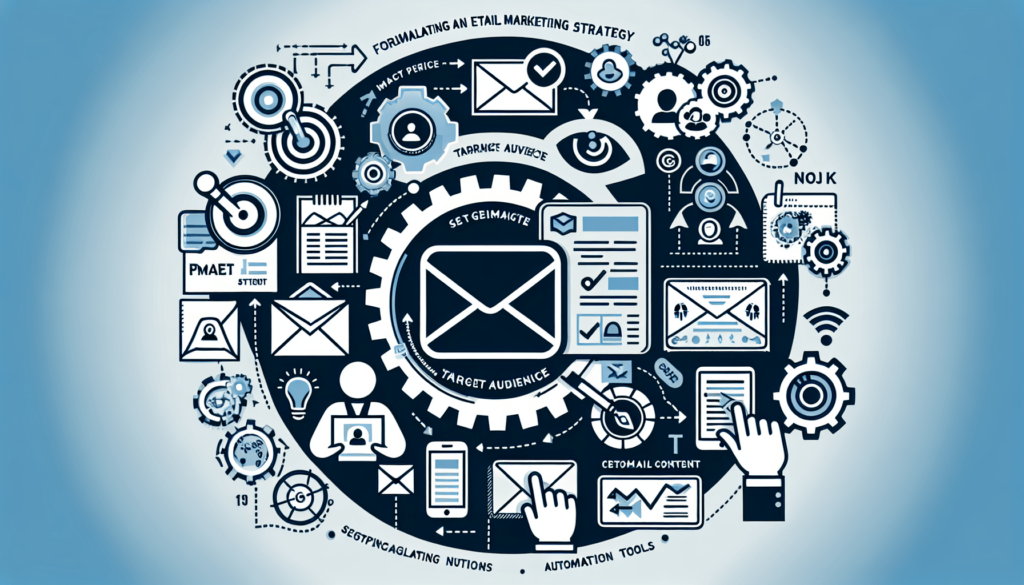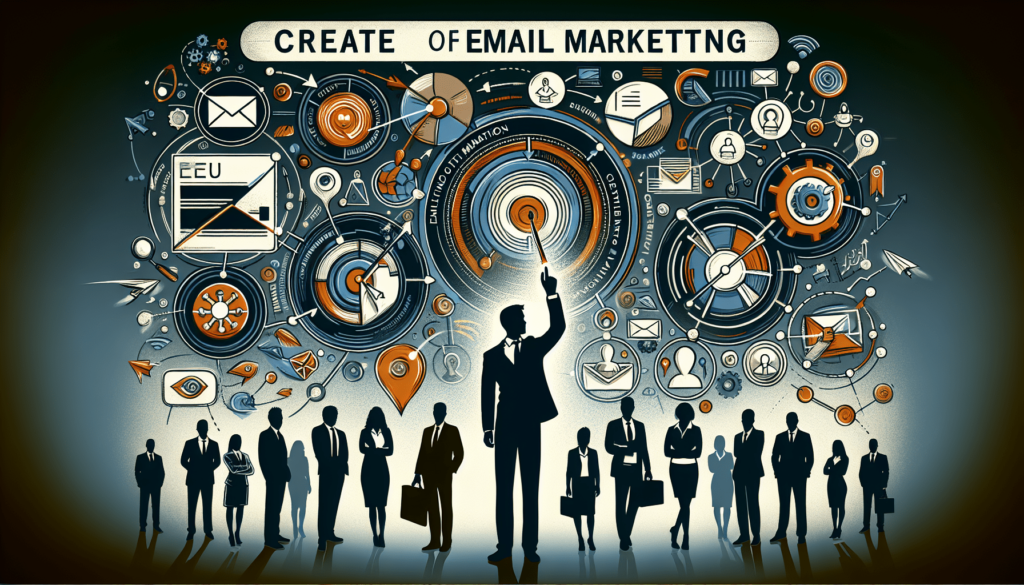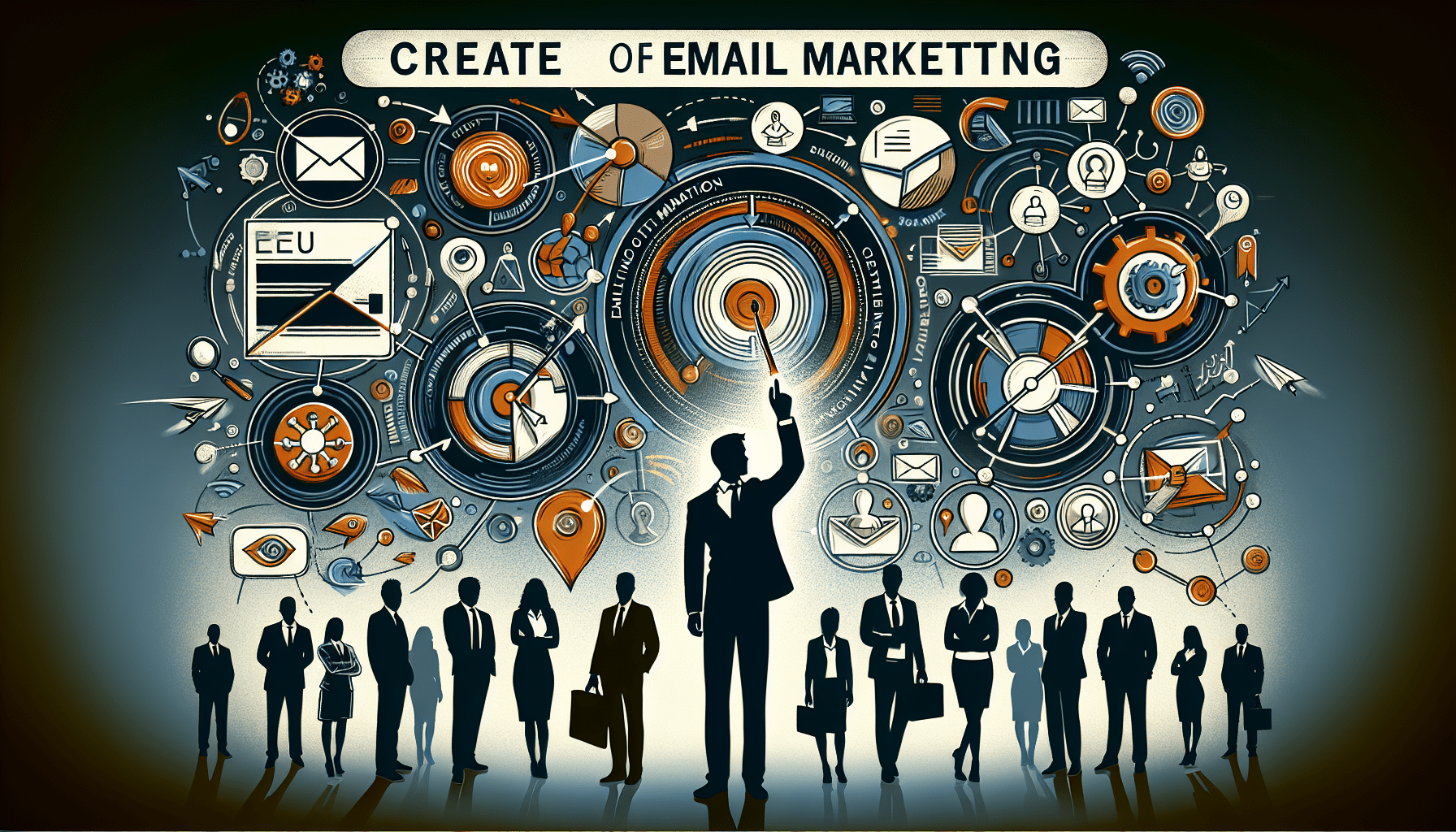You’ve decided it’s time to take your business to the next level and harness the power of email marketing to connect with your audience. But where do you begin? In this article, we’ll guide you through the process of creating an email marketing strategy from scratch. From defining your goals to crafting compelling content, we’ll provide you with the step-by-step roadmap you need to start engaging and converting your subscribers.
Define Your Goals
When starting your email marketing strategy from scratch, it’s important to clearly define your goals. This will provide direction and focus for your entire campaign. Identify your objectives, whether it’s increasing brand awareness, driving website traffic, generating leads, or promoting sales. Your goals should be specific, measurable, attainable, relevant, and time-bound (SMART). By setting clear goals, you’ll have a benchmark to measure your success and adjust your strategy accordingly. It’s also crucial to align your goals with your overall marketing strategy to ensure consistency and coherence across all channels.
Identify Your Target Audience
To effectively reach your target audience, it’s essential to define your ideal customer persona. This involves creating a detailed profile of your typical customer, including demographics, interests, needs, pain points, and behaviors. Understanding your audience will allow you to tailor your email content to their specific needs and preferences. Additionally, segmenting your email list based on different characteristics or behaviors can help you deliver more personalized and targeted messages. By gathering demographic and behavioral data, such as age, location, purchase history, and engagement, you can create segments and send more relevant emails.

Choose an Email Service Provider (ESP)
Selecting the right email service provider (ESP) is crucial for the success of your email marketing strategy. Research available ESPs to evaluate their features, pricing, and reputation. Consider whether the ESP offers easy-to-use email builders, automation capabilities, list management tools, and integration options with other platforms. Pricing is also a significant factor to consider, ensuring it aligns with your budget and scalability needs. Moreover, evaluate the deliverability and reporting capabilities of the ESP. You want your emails to reach the inbox and have access to crucial metrics to measure the effectiveness of your campaigns.
Build Your Email List
Building a high-quality email list is fundamental to the success of your email marketing strategy. Offer valuable incentives to encourage sign-ups, such as exclusive content, discounts, or free resources. Create compelling landing pages and opt-in forms that clearly communicate the benefits of joining your email newsletter. These forms should be easy to fill out and prominently displayed on your website or relevant landing pages. To further promote your email newsletter, leverage various channels like social media, blog posts, and other marketing campaigns to attract new subscribers.

Create Engaging Email Content
The content of your emails plays a crucial role in attracting and engaging your subscribers. Craft attention-grabbing subject lines that make recipients curious and eager to open your emails. Personalization can also significantly enhance engagement, so ensure your copy is compelling and tailored to your audience’s interests and needs. Use storytelling techniques and include emotional appeals to create a connection with your readers. Furthermore, incorporate visual elements like images and videos to make your emails more visually appealing and interactive. Providing valuable and relevant content will help keep your subscribers engaged and eager to open future emails.
Design Eye-catching Email Templates
A well-designed email template enhances the visual appeal and professionalism of your emails. Choose a responsive design that adjusts to different screen sizes, ensuring your emails look great on both desktop and mobile devices. Customizing your templates to match your brand’s aesthetics is essential for creating a consistent and recognizable email experience for your subscribers. Use your brand colors, logos, and fonts to maintain visual consistency across all your communications. Being consistent with your branding helps reinforce your brand image and builds trust with your subscribers. Additionally, optimizing your email templates for mobile viewing is critical, as a significant portion of email opens now occur on mobile devices.
Automate Your Email Campaigns
Automation allows you to streamline your email marketing efforts and deliver timely and relevant messages to your subscribers. Set up welcome emails to greet new subscribers and introduce them to your brand. Autoresponders can be leveraged to send a series of emails based on specific triggers, such as a subscriber’s birthday or a milestone anniversary. By implementing abandoned cart emails, you can remind customers about the items they left behind and potentially recover lost revenue. Re-engagement emails are also valuable for reconnecting with inactive subscribers and encouraging them to re-engage with your brand.
Test and Optimize
Testing and optimizing your email campaigns is crucial for ongoing improvement and success. Perform A/B testing on subject lines and content to determine which variations resonate better with your audience. Analyze email performance metrics, such as open rates, click-through rates, conversion rates, and revenue generated. By continuously monitoring and analyzing these metrics, you can gain valuable insights into what works and what doesn’t. Use these data-driven insights to refine your email marketing strategy, make informed decisions, and improve your campaign’s overall effectiveness.
Comply with Email Marketing Laws
To ensure your email marketing strategy is compliant and respects user privacy, familiarize yourself with email marketing laws such as the CAN-SPAM Act and GDPR. These regulations provide guidelines regarding the collection, use, and retention of personal data. Obtain explicit consent from your subscribers to collect and use their data for email marketing purposes. It’s essential to clearly communicate how their data will be used and provide transparent opt-out options. By adhering to these laws, you build trust with your subscribers and maintain a positive reputation.
Monitor and Evaluate Results
Monitoring and evaluating the results of your email marketing campaigns is vital to understanding their effectiveness. Track key metrics such as email open rates, click-through rates, and conversion rates to assess the performance of your emails. Analyze revenue metrics to determine the impact your emails have on your bottom line. Utilize analytics tools to gain insights into subscriber behavior, engagement patterns, and email performance. By continuously monitoring and evaluating your results, you can identify areas of improvement, optimize your email marketing strategy, and achieve better outcomes.
Creating an effective email marketing strategy from scratch requires careful planning and execution. By defining your goals, identifying your target audience, selecting the right ESP, building your email list, crafting engaging email content, designing eye-catching templates, automating your campaigns, testing and optimizing, complying with email marketing laws, and monitoring and evaluating results, you can develop a successful and impactful email marketing strategy that drives engagement, conversions, and ultimately, business growth. Remember, email marketing is a powerful tool when used strategically and thoughtfully, so invest the time and effort to create a strong foundation for your email marketing success.

